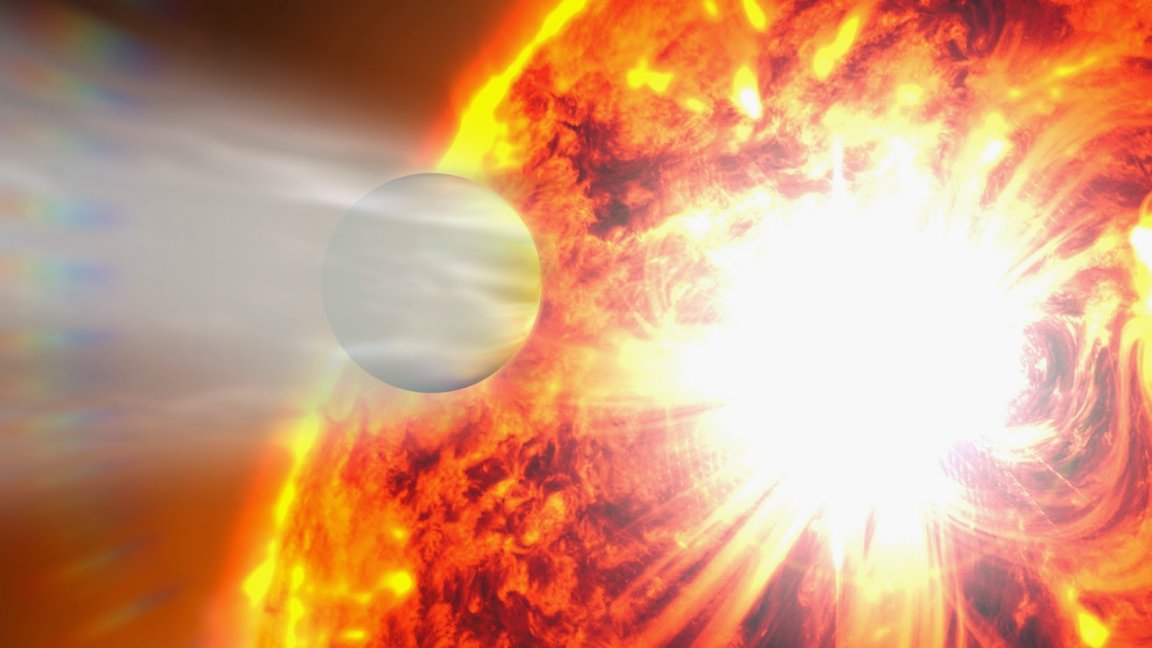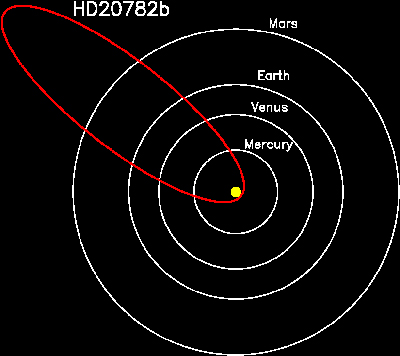
A Strange Orbit
A new study detailed in The Astrophysical Journal describes a recently discovered exoplanet with a very peculiar orbit: comet-like, it swings around its sun in a flattened ellipse, with the central star at one focus of the orbit and the outer reaches of the system at the other.
The discovery was made by Stephen Kane and his team at San Francisco State University, which first noticed the extrasolar body after detecting reflected light as the planet approached its star. The exoplanet is named HD 20782b, and is located 117 light years away from Earth.
The orbit of HD 20782b has an eccentricity rating of .96, making it the most elliptical orbit that astronomers have so far measured. The planet moves in an elongated ellipse before it slingshots around its host star.
The team says the discovery is “a particularly lucrative observing opportunity” in the study of an eccentric-orbit planet and its atmosphere. They can learn how the planet can survive such a close encounter with its sun by observing the light reflected off of it.

Following the Light
HD 20782b is more than twice as far away from its star than the Earth is to our Sun whenever the exoplanet reaches its furthest arc. On the opposite end, it comes so close to its host star that it’s closer than Mercury is to the Sun.
“It’s around the mass of Jupiter, but it’s swinging around its star like it’s a comet,” says Kane.
Kane and his colleagues confirmed the eccentric orbit through the Transit Ephemeris Refinement and Monitoring Survey (TERMS), which looks at exoplanets passing in front of their stars. Using space telescopes, the astronomers collected light data to study the planet’s atmosphere and how it behaves.
“The time it takes to swing around the star is so quick that there isn’t time to remove all the icy materials that make the atmosphere so reflective,” says Kane.
They don’t yet know what HD 20782b’s atmosphere is composed of, but Kane’s team says that its observations hint at an atmosphere similar to Jupiter’s reflective cloud cover.
Their research has been published in The Astrophysical Journal.